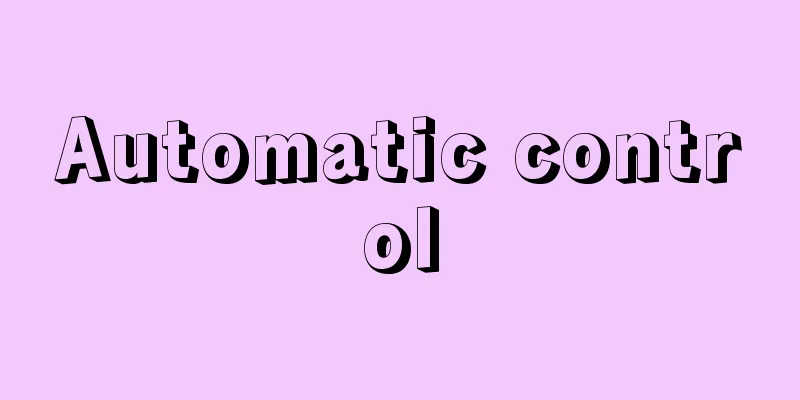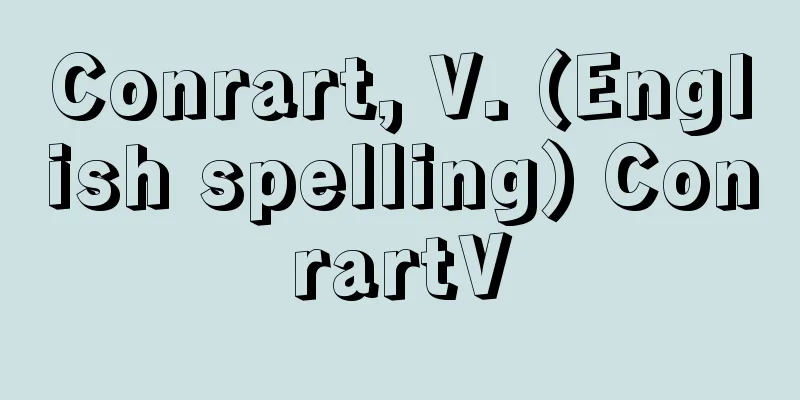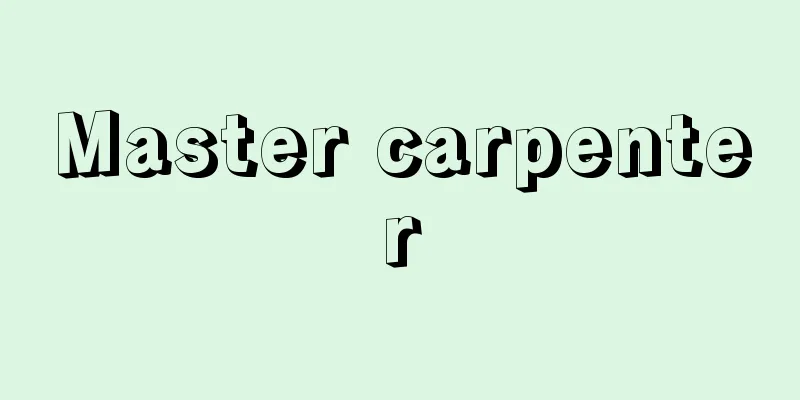Automatic control

|
Control is the act of manipulating the state or behavior of an object to make it into a desirable state. When a machine or device autonomously performs such operations without human intervention, it is called automatic control. [Hiroo Yamazaki] Automatic control technology in everyday lifeControl goals, or the desired state of affairs, are usually set by a person, but if the system that executes the control has a hierarchical structure, the goals are often set by a higher-level system. Possible targets for control include the natural environment, human behavior, and even intangible information, but here we will focus on the content as engineering technology and focus on tangible man-made objects. In such cases, the objectives of control can be broadly divided into maintaining a desired state of the object and suppressing disturbances that interfere with this, and faithfully tracking a changing target. To give an example that is familiar to us, the former is the automatic temperature control of a room air conditioner. The latter is the autofocus of a camera, where the lens is operated so that the image remains in focus even if the subject moves. Using these examples, we will explain the basic functions of a system that performs automatic control. First, parameters that characterize the desired target state are determined, and there is a function to set them as the target for automatic control. In a room air conditioner, the desired state is usually characterized by the room temperature. In a camera, the contrast of an image is used as a characteristic of the degree to which the subject is in focus. In other words, the state with maximum contrast is considered to be in focus. Next, there is a function to measure the state of the subject. In a room air conditioner, a temperature sensor measures the room temperature, and in a camera, the contrast of the image sensor is quantified. Furthermore, the deviation is found by comparing the target state with the measured value of the subject. Furthermore, there must be a function to generate a control signal and operate the subject so as to minimize the deviation. In a room air conditioner, the room temperature is controlled by issuing a heating or cooling command, and in a camera, the lens system is operated to maximize the contrast. These basic functions always work together to maintain the room at a target temperature, suppress disturbances, and allow the lens system to follow the movement of the subject. These examples are characterized by the fact that the results of the operations are fed back as deviations through measurements, and are therefore called feedback control. In addition to these, there is feedback control and heterogeneous automatic control. When there are multiple different states, it is the automatic manipulation of state transitions so that they are realized correctly according to a predefined sequence and conditions. This is called sequence control. A familiar example is an electric washing machine. You put in your laundry and detergent and press the start button, and it automatically performs the following steps in sequence: water supply, washing, draining, water supply, rinsing, draining, spin-drying, and drying. This is also automatic control, as it automatically realizes the desired state of the target device. However, the process of technological development and the situations in which it is applied are different. In today's society, automated systems that use automatic control technology are closely related to our lives. In this, feedback control and sequence control are appropriately combined and each plays an important role. [Hiroo Yamazaki] History of Automatic ControlHistorically, sequence control is older. The beginnings of this technology can be seen in mechanical dolls and automatic musical instruments. In music boxes and automatic looms that create complex patterns, the operating programs for the machines that create songs and patterns are written precisely in chronological order on the surfaces of drums or disks, and the machine's functions can be changed by changing the programs. In fact, the punch card system of Joseph-Marie Jacquard's looms was the forerunner of later punch card systems in computers. The origin of feedback control can be traced back to the governor that stabilized the rotation speed of steam engines, which drove the Industrial Revolution in the 19th century. The centrifugal governor (1787), which is said to have been invented by James Watt, used the centrifugal force acting on a weight attached to the rotating shaft to detect the rotation speed, and used this centrifugal force to adjust the steam flow rate and stabilize the rotation speed. However, the rotation speed was often unstable and vibration occurred. The solution to this problem was a pioneer in the systematic description of feedback control technology and the theory of stability, leading to the development of control engineering. Later, in the 20th century, the invention of the vacuum tube amplifier, the elucidation of the stability of negative feedback amplifiers, and the description of system characteristics using transfer functions led to the construction of classical control theory, which formulates the dynamic characteristics and stability of one-input, one-output feedback control systems. In terms of applications, the suppression of disturbances by constant value control of processes became widespread, and automation progressed. During World War II, the development of automatic tracking devices for firearms began in order to counter the growing power of aircraft, and target tracking technology using servo control, which is another aspect of feedback control, was developed. In Japan, process control technology was introduced from the materials and energy industry after the Second World War, and spread widely throughout industry as the economy grew rapidly. In the United States, Norbert Wiener took up information as an element on a par with matter and energy, and proposed cybernetics, a theory of control and communication that spans machines, living organisms, and society. In this work, he clarified that the concept of feedback control is a fundamental structure of information that is universally present not only in the world of engineering technology, but also in living organisms and society at large. Modern control theory, which handles multi-variable, multi-input states in a state space, has been developed since the 1960s. If the object of control can be modeled, it is possible to construct a control system that achieves optimal and precise control through theory, and this can also be applied to multi-variable, multi-input, multi-output systems. However, accurate modeling is an issue in real systems, and it was not immediately widely applied. Modern control theory is easier to abstract and expand than classical theory, so it has also developed into systems theory, which extends the object of control to general systems. On the other hand, there is a trend to build optimal control systems by trial and error without strictly modeling the target. This involves approaches such as neural network techniques and genetic algorithms that model the evolution of organisms through mutation. These have been successful by utilizing the processing power of advanced computers. However, there are cases where the optimum conditions reached are local optimums and not global optimums, which can be problematic. [Hiroo Yamazaki] Development and integration of automatic control technologyWe have mentioned that sequence control and feedback control technologies are at the origin of automatic control technology. Initially, the two technologies developed in different fields, but as their range of application expanded, there was a trend for the two to be closely combined in one system or for the technologies to be integrated. We will discuss the development of these technologies and the state of their integration up to the present day. Controllers that realized sequence control had a structure in which relays, timers, etc. were wired together, but it was inevitable that sequence controllers would be replaced by computers, which are sequential machines that write programs as software and execute them in sequence. With the development of microprocessors in the 1970s, it became possible to replace sequence controllers with microcomputers. Originally, sequence control was an open-loop control in which the results of the transmitted control signal are not fed back to the transmitter, but the progression of the sequence can be time-based or logic-based. In the latter case, when the results of the control signal are reflected, it becomes a closed-loop control, and the clear boundary between open loop and closed loop disappears. Also, in the start-up and stop stages of a process before and after constant value control is implemented in feedback control of a process, many steps must be executed in the correct order, so it is naturally sequence control. When the start-up and stop of processes, which were previously performed by humans, were automated, feedback control and sequence control were fused in process control systems. Also, the control of intelligent robots is sequence control that follows the procedure of the work to be performed, but each action is feedback controlled so that it is executed accurately and quickly. Automatic control technology is expanding from industrial production to all aspects of social life. Its expansion in transportation systems is particularly noticeable. A familiar example is the elevators in buildings. Elevators are almost entirely automatic, and as buildings have become taller, elevators have also become faster, but they accelerate and decelerate so smoothly that users no longer feel the acceleration. Waiting times have also decreased thanks to improved control through group management of multiple elevators. With the development of autopilots in passenger aircraft and cruise ships, route, direction, speed, altitude, etc. are automatically controlled in the sky and on the open sea, and the pilot's main task is to monitor the equipment and handle any abnormalities. Automation is also advancing in cutting-edge scientific research. Analysis of the enormous human genome was completed earlier than planned in 2000. This was made possible by a sequence control device and analytical device called a DNA sequencer, which automates sample handling and greatly increases the processing speed of analysis. [Hiroo Yamazaki] Social impactWhen automation was introduced into industry, the first problem to arise was unemployment. America was early to introduce robots (industrial robots) to the automobile industry, but the number introduced was limited. Japan was a little later, but introduced a much larger number of robots. In particular, robots were almost universally used in the welding and painting processes of body assembly. However, Japanese companies' emphasis on job security enabled them to avoid serious unemployment problems. Rather, in the welding and painting processes, which have poor working conditions, they were able to eliminate pain and danger for workers. On the other hand, new jobs were created that involved managing and maintaining large numbers of robots and automated machines. Automation has also reduced the number of workers in the electronics industry. Smaller, more detailed products are designed with automated assembly in mind. In the course of this development of automation, important skills and know-how that determine the quality of conventional products, such as production and adjustment techniques, have come to be embedded in automated production equipment as automatic control intelligence. As a result, it has become difficult to maintain a quality advantage over rivals and foreign countries that have purchased production equipment. Examples include memory LSIs (large-scale integrated circuits) and liquid crystal displays, where products developed in Japan lost their markets to foreign countries in a short period of time. This trend is serious, and the more advanced the technology and the more automated the manufacturing process is for new products, the shorter the period in which the pioneer's advantage can be maintained. The process industry is the industry that has seen the greatest reduction in direct human labor. Even after fixed-value control became widespread, starting and stopping were still done by humans, but this also shifted to automation with the integration of automatic control. Therefore, the work that humans do in factories is monitoring processes and automatic control devices. They must constantly monitor the process, and if an abnormality occurs, they must immediately take appropriate action. This type of work is not physically demanding, but it is mentally stressful. Also, because it is difficult to correctly transfer the skills to handle abnormalities that rarely occur, there are many cases where a minor malfunction is mistakenly handled and turns into a major accident. A challenge with automatic control systems is communication with the operators who monitor them, especially when an abnormality occurs. As mentioned above, the unemployment problem was absorbed by technological advances and did not become serious. However, in exchange for being freed from physical labor, the form of human labor changed and people had to take on mental stress. [Hiroo Yamazaki] "Automatic Control Handbook: Basics" and "Automatic Control Handbook: Equipment and Applications" edited by the Society of Instrument and Control Engineers (1983, Ohmsha)" ▽ "Fundamentals of Control Engineering" by Iwai Sosuke (1991, Shokodo)" ▽ "Mechanical Engineering Lectures: Automatic Control" by Oshima Kojiro (1999, Kyoritsu Shuppan)" ▽ "A Talk on Automatic Control" by Matsuyama Yutaka (1999, Japanese Standards Association)" ▽ "Fundamentals and Exercises on Automatic Control" by Suzuki Takashi (2003, Sankaido)" ▽ "System Control Engineering: Basics" edited by Terashima Kazuhiko, Katayama Noboru et al. (2003, Asakura Shoten)" ▽ "A Reintroduction to Automatic Control: Gain Strength Just by Reading" by Usuda Akira (2004, Nikkan Kogyo Shimbun)" [References] | | | | | | | | | | | | | |Governor| |Source: Shogakukan Encyclopedia Nipponica About Encyclopedia Nipponica Information | Legend |
|
制御とは対象の状態や挙動を望ましい状況になるように操作することである。このような操作を人の手を介さずに機械や装置が自律的に実行することを自動制御という。 [山﨑弘郎] 身近な自動制御技術どのような状況が望ましいか、制御の目標は通常は人から与えられるが、制御を実行するシステムが階層構造をもつ場合、より上位のシステムから目標を与えられることが多い。 制御の対象として、自然環境や人の行動、あるいは無形の情報などまで考えられるが、ここでは、工学技術としての内容を重視し、形のある人工物を対象とする。その場合、制御の目的は対象の望ましい状況を維持し、それを妨げる外乱を抑制することと、変化する目標を忠実に追従することとに大別できる。われわれの身近な例をあげれば、前者は部屋のルームエアコンの自動温度制御である。後者はカメラのオートフォーカスであり、撮影対象が移動しても画像のピントがあうようにレンズが操作される。これらの例において、自動制御を実行するシステムの基本的な機能を説明しよう。 まず、目標の望ましい状況を特徴づけるパラメーターが定められ、それを自動制御の目標として設定する機能がある。ルームエアコンでは望ましい状況は通常は部屋の温度で特徴づけられる。カメラでは画像のコントラストを撮影対象のピントがあっている程度の特徴として利用する。すなわち、コントラストが最大の状態をピントがあった状態とみなす。次に対象の状況を計測する機能がある。ルームエアコンでは温度センサーにより室温を計測するし、カメラでは画像センサーのコントラストを定量化する。さらに、目標の状態と対象の計測値とを比較して偏差を求める。さらに、偏差を最小になるように制御信号を発生して対象を操作する機能がなければならない。ルームエアコンでは加熱あるいは冷却の指令を発信して室温を操作するし、カメラではレンズ系を操作してコントラストが最大になるようにする。 これらの基本的な機能がつねに連携して動作することにより、室内が目標温度に保持され外乱が抑制され、また、撮影対象の動きにレンズ系が追従する。これらの例では、操作の結果が計測を通して偏差としてフィードバックすることが特徴であるので、フィードバック制御という。 このほかに、フィードバック制御と異質の自動制御がある。それは複数の異なる状態があるとき、それらがあらかじめ定められた順序と条件に従い、正しく実現するように状態の推移を自動操作することである。これをシーケンス制御という。身近な例をあげると、電気洗濯機がある。洗濯物と洗剤を入れ、スタートのボタンを押せば、給水、洗い、排水、給水、すすぎ、排水、脱水、乾燥までを順次自動的に実行する。これも対象の装置の状態を望ましい状況で自動的に実現することであるから、自動制御であることに変わりはない。しかし、技術の発達の過程や応用の場面は異なる。現在の社会では、自動制御技術を利用した自動化システムはわれわれの生活とは密接な関係がある。このなかで、フィードバック制御とシーケンス制御は適切に組み合わされて、それぞれ重要な役割を果たしている。 [山﨑弘郎] 自動制御の歴史歴史的にはシーケンス制御の方が古い。からくり人形や自動演奏の楽器などに、その技術の萌芽(ほうが)をみいだすことができる。オルゴールや複雑な柄(がら)をつくりだす自動織機などでは、曲や柄を実現する機械の操作プログラムがドラムやディスクの面上に時間の順序に従い正確に記述されており、プログラムの変更により機械の機能を変更することができた。実際、ジョゼフ・マリー・ジャカールの織機のパンチカードシステムは後の計算機のパンチカードシステムの先駆となった。 フィードバック制御の起源をたどると、19世紀の産業革命を推進した蒸気機関の回転数を安定化させる調速機governorに至る。ジェームズ・ワットが発明したとされる遠心調速機(1787)は回転軸に取り付けたおもりに働く遠心力を利用して回転数を検出し、遠心力を利用して蒸気流量を調整して回転速度を安定化する原理であった。しかし、しばしば回転速度が安定せず振動を生じた。この問題の解決がフィードバック制御技術の系統的記述や安定性の理論の先駆けとなり、制御工学の発展につながった。その後、20世紀に入り、真空管増幅器の発明や負帰還増幅器の安定性の解明、伝達関数によるシステム特性の記述などから、1入力1出力のフィードバック制御系の動特性や安定性を定式化する古典制御理論が構築された。 応用面においてもプロセスの定値制御による外乱の抑制が普及し自動化が進んだ。第二次世界大戦中に威力を増した航空機対策から火器の自動追尾装置の開発が始まり、フィードバック制御の別の局面であるサーボ制御による目標追従技術が発達した。 日本においては、第二次世界大戦後、素材エネルギー産業からプロセス制御技術が導入され、経済の高度成長にのって産業に広く浸透した。アメリカではノーバート・ウィーナーが物質、エネルギーと並ぶ要素として情報をとりあげ、機械と生体と社会にまたがる制御と通信の理論であるサイバネティックスを提案した。そのなかで、フィードバック制御の概念が工学技術の世界だけでなく、広く生体や社会にまで普遍的に存在することを情報の基本構造として明らかにした。 1960年代から多変数多入力の状態を状態空間で扱う現代制御理論が発展した。制御の対象をモデル化できれば、理論によって最適で精緻(せいち)な制御を実現する制御システム構築が可能であり、それが多変数多入力、多出力の系にも応用可能である。しかし、現実の系では正確なモデル化が問題で、ただちに広く応用されることはなかった。現代制御理論は古典理論に比べて抽象化や拡張が容易であったので、制御対象を一般的なシステムに拡張したシステム理論にも発展した。 一方、対象を厳密にモデル化せずに試行錯誤により最適な制御システムを構築しようという流れがある。それはニューラルネットワーク手法や生物の突然変異による進化をモデルにした遺伝アルゴリズムなどの接近法である。これらは発達したコンピュータの処理能力を活用して成果をあげている。しかし、到達した最適条件が局所最適で、全体最適ではないことが問題になる場合がある。 [山﨑弘郎] 自動制御技術の展開と融合自動制御技術の源流においてシーケンス制御とフィードバック制御技術があることを述べた。当初は二つの技術はそれぞれ異なる分野で発展を遂げたが、応用範囲が拡大されるにしたがい、両者が一つのシステムのなかで密接に組み合わされたり、技術が融合する傾向がみられる。これらについて現代に至る発展と技術の融合の状況を述べる。 シーケンス制御を実現するコントローラーはリレーやタイマーなどを結線した構造であったが、プログラムをソフトウェアとして記述し、それを順次実行する順序機械であるコンピュータによってシーケンスコントローラーが代替されるのは必然であった。1970年代にマイクロプロセッサーが開発されるにおよび、マイクロコンピュータによるシーケンスコントローラーの代替が実現した。 本来シーケンス制御は、発信された制御信号の結果が発信側にフィードバックされない開ループ制御であるが、シーケンスの進行が時間による場合と論理による場合とがあり、後者の場合に制御信号の結果が反映する場合には閉ループ制御となり、開ループと閉ループとの明確な境界は消滅する。また、プロセスにおけるフィードバック制御において定値制御が実施される前後のプロセスの起動の段階や停止の段階においては、多数の段階を正しい順序で実行する必要があるので当然シーケンス制御となる。人が行っていたプロセスの起動停止を自動化するに及び、フィードバック制御とシーケンス制御がプロセス制御システムにおいて融合した。また、知能化ロボットの制御は実行する仕事の手順に従うシーケンス制御であるが、個々の動作は正確かつ迅速に実行されるようにフィードバック制御されている。 自動制御技術は産業における生産の場から社会生活のあらゆる局面に拡大されつつある。交通システムにおける拡大がとくに顕著である。身近な例では、ビルのエレベーターがある。エレベーターは、ほとんど自動運行されており、ビルの高層化によりエレベーターも高速化されたが、加速、減速がスムーズで利用者は加速度を感じなくなった。また、複数のエレベーターの群管理による制御が進んだおかげで待ち時間が減少した。旅客機や客船の運航もオートパイロットの発達で上空や外洋では航路、方位、速度、高度などが自動的に制御され、パイロットは装置の監視と異常の処理が主たる作業となる。 先端的な科学研究の場においても、自動化が進んでいる。膨大なヒトゲノムの解析は2000年に計画より早く終了した。これを実現したのは、試料の操作が自動化され、解析の処理速度が非常に高められたDNAシーケンサーとよばれるシーケンス制御装置兼分析装置であった。 [山﨑弘郎] 社会的影響産業に自動化が導入されるときに、最初に問題となるのは失業問題であった。自動車産業にロボット(産業用ロボット)が導入されたのはアメリカが早かったが、導入数は限られていた。日本は少し遅れたが、はるかに多くのロボットが導入された。とくにボディー組立ての溶接工程や塗装の工程ではほぼ全面的であった。しかし、雇用確保を重視する日本企業のやり方で深刻な失業問題を回避できたのである。むしろ労働環境がよくない溶接や塗装の工程では、作業者の苦痛や危険を除くことができた。一方では多数のロボットや自動化機械を管理し、保守する新しい業務が生じた。 電子機器産業においても自動化により多くの人手が削減された。小型化、細密化された製品群は自動化組立てを前提に設計されている。そのような自動化の発展過程のなかで、生産技術や調整技術など、従来製品の品質を左右する重要なスキルやノウハウが、自動化された生産装置のなかに自動制御の知能として埋め込まれることになった。その結果、生産装置を購入したライバルや外国に対して品質の優位性を保つことが困難になってきた。メモリーLSI(大規模集積回路)や液晶ディスプレーなど、日本で開発された商品が短期間に外国に市場を奪われた例である。この傾向は深刻で、先端技術で製造の自動化が進んだ新しい製品ほど、先駆者の優位性を保持できる期間が短い。 プロセス産業は人の直接作業がもっとも減少した産業である。定値制御が普及した後も、起動や停止は人が行っていたが、これも自動制御の総合化により自動化に移行した。したがって、工場で人が従事するのはプロセスと自動制御装置の監視作業である。常時工程を監視し、もし異常が発生すれば、ただちに適切な処理を行わなければならない。この種の作業は肉体的負担は少ないけれども、精神的にはストレスの多い作業である。また、めったにおきない異常の処理技術を正しく伝承するのは困難なため、小さな故障の処理を誤って大きな事故にしてしまう例が少なくない。自動制御システムは監視するオペレーターとのコミュニケーション、とくに異常時のコミュニケーションが課題である。 前述のように失業問題は技術の進歩により吸収され深刻にならなかった。しかし、肉体労働から解放されたかわりに人間の労働の形が変化し、精神的なストレスを引き受けなければならなくなった。 [山﨑弘郎] 『計測自動制御学会編『自動制御ハンドブック 基礎編』『自動制御ハンドブック 機器・応用編』(1983・オーム社)』▽『岩井壮介著『制御工学基礎論』(1991・昭晃堂)』▽『大島康次郎著『機械工学講座 自動制御』(1999・共立出版)』▽『松山裕著『自動制御のおはなし』(1999・日本規格協会)』▽『鈴木隆著『自動制御の基礎と演習』(2003・山海堂)』▽『寺嶋一彦編著、片山登揚他著『システム制御工学 基礎編』(2003・朝倉書店)』▽『臼田昭司著『読むだけで力がつく自動制御再入門』(2004・日刊工業新聞社)』 [参照項目] | | | | | | | | | | | | | | | |出典 小学館 日本大百科全書(ニッポニカ)日本大百科全書(ニッポニカ)について 情報 | 凡例 |
Recommend
Przheval'skii, Nikolai Mikhailovich
Born: April 12, 1839 in Smolensk [Died] November 1...
Alfred Reginald Radcliffe‐Brown
1881‐1955 British social anthropologist. He played...
Orthosilicate - Orthosilicate
...The figure shows the names of these six types ...
Rhyme - King
Rhetorical device in which the same or similar so...
presynaptic facilitation
…The former is because the directions of the ioni...
Molecular beam
A stream of neutral molecules moving in a straigh...
Tree Lizard - Tree Lizard
…However, a few species exceed 50cm in length, an...
Kawara Saiko - Kawara Saiko
A perennial plant of the Rosaceae family (APG cla...
Kingdom of Abkhaz
...An autonomous republic (which has recently dec...
δ function - delta function
A function introduced by P.A. Dirac to formulate q...
Emmy von N.
One of the cases reported by S. Freud in Studies o...
Sviones
…In the Bronze Age (c. 1500-c. 500 BC), the relat...
Grawitz, P.
...This is a malignant tumor that develops in the...
Izusan Gongen
(Atami City, Shizuoka Prefecture) A designated tou...
Cheyletidae
…General term for mites belonging to the family C...

![Usa [city] - Usa](/upload/images/67cafbf6495f2.webp)







